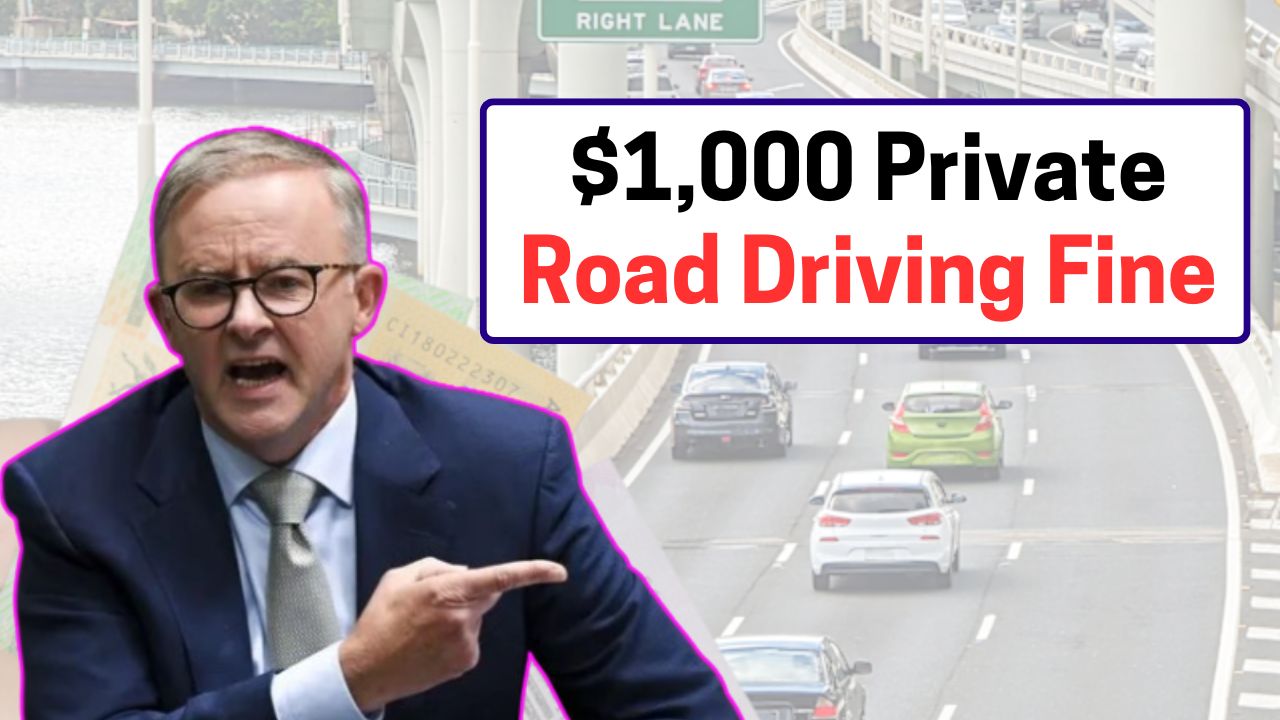Starting July 2025, a new traffic enforcement rule is drawing serious attention from Australian motorists. Drivers across the country can now face fines of up to $1,000 for certain violations committed on private roads a move that has raised questions about where the line between private property and public law enforcement lies. While many drivers assume road rules apply only on public streets and highways, the government’s updated road safety laws aim to eliminate that assumption entirely.
Why Are Drivers Being Fined on Private Roads?
The updated law was introduced after a surge in complaints and incidents on privately owned roads, including those in shopping centre carparks, residential estates, mining sites, university campuses, and gated communities. These areas, while privately maintained, are still considered accessible to the public, and thus, the government argues, public road safety rules must still apply.
According to transport authorities, reckless driving, speeding, and dangerous behaviour in these spaces have led to injuries, property damage, and even fatalities. The new rule grants state traffic enforcement officers the authority to issue fines for violations that occur in these areas, aligning the penalties with those on public roads.
Offences Covered Under the New $1,000 Fine Rule
The fine does not apply to minor missteps such as parking errors but targets more serious driving offences that compromise safety in shared private areas. Below is a table showing the types of offences and associated penalties under the new enforcement:
| Offence on Private Roads | Penalty (AUD) | Enforcement Applies |
|---|---|---|
| Reckless or Dangerous Driving | $1,000 | From July 2025 |
| Speeding Above Posted Limits | $500–$1,000 | From July 2025 |
| Use of Mobile Phone While Driving | $600 | From July 2025 |
| Failing to Give Way or Obey Signage | $250–$750 | From July 2025 |
| Illegal U-Turns or Driving on Footpaths | $750 | From July 2025 |
These fines are aligned with existing public road penalties and can be enforced by state police or, in some cases, authorised local council officers who have jurisdiction on specific private properties.
Which Areas Are Considered “Private Roads”?
The classification of a road as “private” doesn’t exempt it from the law if the public has open access to it. This includes:
- Shopping centre parking lots
- Hospital or university roadways
- Private housing estates with shared driveways
- Retirement villages with internal road systems
- Mining roads open to contractors or staff
The key distinction is whether the road is publicly accessible, even if it’s owned by a private company or individual. If it is, then the law applies.
What Does This Mean for Drivers?
The change aims to standardise driver behaviour across all types of roads and improve safety in areas that have long operated in legal grey zones. Motorists can no longer claim ignorance or use the “private road” excuse to avoid penalties.
Dashcam footage, complaints, or officer observations on-site can lead to the issuing of an infringement notice under the new policy. Insurance companies have also voiced support for the change, citing improved safety compliance and reduced accident risk in carparks and similar spaces.
How Will the Fines Be Issued?
Fines can be issued on-the-spot by officers or mailed after evidence is reviewed. In many cases, CCTV or third-party footage will be used to support enforcement. Drivers will still have the right to contest fines through the usual legal channels.
Motorists are encouraged to observe posted signs, drive slowly, and follow all standard road rules even within private property boundaries. The aim is to encourage consistent, cautious behaviour no matter where a vehicle is being driven.
